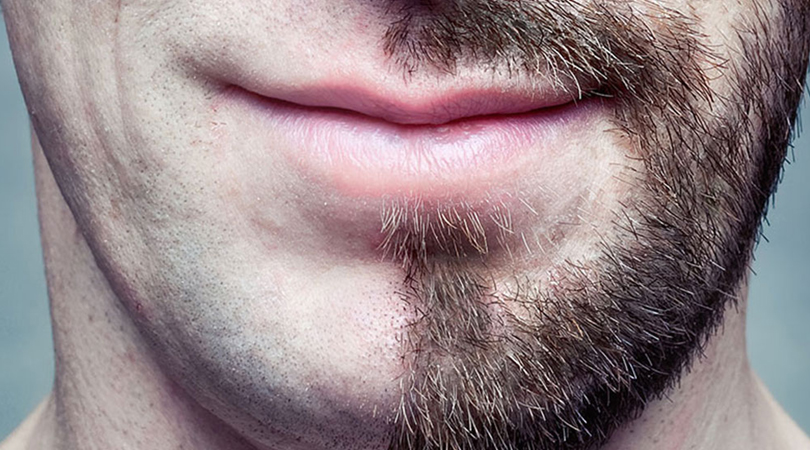
Beard Transplant
Beard transplant is a procedure that is frequently preferred by individuals who have little or no beard on their face. In addition, beard transplantation methods called Fue and FUT are used in this procedure, which is also preferred for covering the scars on the face. The appropriate age range for this procedure is generally between the ages of 25-50 and when beard transplant is performed at these ages, successful results are obtained.
The duration of the procedure varies in the range of about 2 to 5 hours, the reason for this is the intensity of the amount of beard transplant that the patient needs. It is possible to transplant beard with approximately 1000 to 2500 hair follicles by performing the application painlessly and without pain under local anesthesia.
The patient is informed by the doctor about the things to be considered after beard transplantation, and it is emphasized that he should protect his face meticulously, especially on the first day. For example: avoiding tight-fitting clothes on the first day prevents hair root loss that may occur after beard transplant. In addition to these, the patient is informed about the recovery process of beard transplant and the recovery rate is increased with various drugs and antibiotics.
What is Beard Transplant?
Beard transplant is the process of transplanting hair follicles taken from the nape between the two ears or from the most suitable part of the body to the beardless parts of the face. Like hair transplantation, beard transplant is applied by the physician under local anesthesia to the areas where shedding due to genetic reasons, traumas or burns. Since the thick roots to be taken provide a more successful result of the beard transplantation process, the existing hair roots in the neck region are preferred.
The patient is examined by the physician in our clinic before the beard transplant to determine the required beard density and to determine the existing hair follicles.
After the necessary examination and analysis, if the person to be transplanted has a health condition that causes shedding, it should be detected and treated. In addition, the hormones of the person to be treated should be at a certain level, therefore, individuals between the ages of 25-50 are considered suitable for beard transplant by experts.
In order for the beard transplant process to be natural, channels are opened at natural angles with thin tips and the roots are grouped as one, double and triple, and they are applied one by one. Especially when planting the beard line, the application of single hair follicles and the opening of channels at 5-10 degree angles in the sideburn area are important for the naturalness of the beard planting process.
Treatment Summary
Operation Time
5 - 8 Hours
Type of Anesthesia
Local Anesthesia
Hospitalization
None
Time to Return to Work
Immediate
Warranty Type
Life Time Warranty
Accomodation
Luxury Hotel
VIP Transfer
Yes
To Whom is Beard Transplant Performed?
In cases where there is no beard in the face area or the density is low, the transplant of hair follicles taken from the suitable parts of the body to the face is called beard transplant. Since the beard is aesthetically important for a man, great increases have been observed in the frequency of beard transplant operations for the last ten years.
As a result of the long beard fashion, today every man cares about the density of his beard and even those who shave their beards daily can apply for beard transplant operations.
Many people, such as those who have scars on their face as a result of an accident, or those who want to change their gender, can have beard transplant in the 20-50 age range.
People Who Need Beard Transplant Operations
- Depending on genetic or environmental factors, they are people who do not have a congenital beard in the face area or subsequently shed.
- Although there is a beard growing on the whole of their face, they do not grow a beard in a small area, and they have a condition such as a hair breaker.
- Despite the fact that they grow a beard all over their face, they are people who are sparse in a certain area and are uncomfortable with this situation.
- They are those who have permanent beard loss due to wounds or burns or who have the scar of an accident that they want to cover on their face.
In short, anyone who is not satisfied with their beard is suitable for beard transplant operations, but for this procedure, the patient should have enough hair follicles in the area where the hair follicles will be collected. In addition, the person to be transplanted should not carry any contagious disease; Those with metabolic diseases such as diabetes should not have serious complaints.
How is Beard Transplantation Performed?
After the method to be used in the beard transplant technique is determined, the hair follicles are collected by applying local anesthesia to the neck or nape area, which is considered suitable for hair follicle collection. In this collection process, the hair follicles are grouped as single, double or triple, just like in hair and mustache transplantation, and placed in a special solution and preparation for beard transplantation is made.
Today, beard transplantation is generally done under two techniques, but since the FUT technique is an old method from the 1990s, it is not preferred much. The main reason for this is that the disadvantages of the Fut technique in beard transplantation are more than its success rate. For this reason, the FUE technique, which has been obtained with the development of modern technology, is preferred for beard transplantation and serious successes are achieved.
Regardless of which method will be applied, hair, mustache or beard transplantation operations are usually carried out in certain stages.
- The area where the hair follicles will be taken and the area to be transplanted are analyzed in detail and the amount of hair follicles to be planted is determined.
- The area where the hair follicles will be taken is anesthetized with local anesthesia and the hair follicles are taken in different shapes depending on the method.
- The area to be transplanted is anesthetized and hair follicles are planted in varying shapes according to the preferred method.
Whatever method is used, operations such as hair, mustache and beard transplantation are performed painlessly under local anaesthesia. Sometimes, general anesthesia can be performed by the doctor if deep sleep is deemed appropriate, but this is not preferred because it can cause the patient to be breathless in beard transplant application. After the anesthesia, the hair follicles taken from the appropriate area by using the patient’s existing hair follicles are transplanted to the area where the person’s beard transplant is planned.
While the hair follicles are being taken, how much to be taken from the nape depends on whether the patient plans a hair transplant after beard transplant. If the patient also plans to apply a hair transplant after the beard transplant operation, it is necessary to take as few hair follicles as possible from the nape area.
What are the Methods of Beard Transplant?
There are two different hair transplantation techniques called FUE Follicular Unit Extraction (Follicular Unit Extraction) and FUT Follicular Unit Transplantation (Follicular Unit Transplantation). However, since FUT is an old method dating back to the 1990s, the FUE method suitable for modern technology is preferred today. FUE is the beard transplant method that is widely preferred by both the patient and the doctor, especially since it does not leave any traces and provides natural results.
Fue beard transplant method
The FUE beard transplantation method was first applied in hair transplantation operations and was developed twenty years ago in order to eliminate all the disadvantages of the FUT technique. Since it gives the closest look to nature, this technique is used in almost all of today’s beard transplant operations. Although it is widely used, the process requires many subtleties, so it is not considered possible to be applied by everyone. However, Fue beard transplantation is performed successfully by plastic surgeons who are trained in the field and know hair follicles and male face types. The method is implemented as follows:
- If the beard density in the facial area of the patient is very low, Fue beard transplantation is preferred since much more hair follicles can be planted per square centimeter.
- Within the method, first the analysis of the donor area, that is, the area where the hair follicles will be taken, is performed, this area is usually the nape area between the two ears.
- During the operation, the nape area, where the hair follicles of the patient will be collected, is first anesthetized by the doctor with local anesthesia.
- With the help of a high-definition camera and a special device, the hair follicles in the region deemed appropriate by the doctor are collected one by one. In addition, a surgical incision is not applied in the beard transplantation process, instead it is worked with special needles; In other words, no surgical incision is made with the FUE technique.
- Hair follicles collected in the reservoir of the device are made suitable in a special device.
- After the hair follicles are taken for beard and beard transplantation, the area where the roots are collected is covered with special bandages.
- While the collected hair follicles are being prepared for beard transplantation, local anesthesia is applied to the recipient area of the patient and the process of opening the channels is started without pain.
- Unlike other methods in FUE beard transplantation, hair follicles are not placed in incisions, but in channels specially opened for each hair root.
- Beard transplantation is carried out by opening channels according to the depth and angle where the hair follicle will be placed, with the help of special needles.
- Depending on the situation, it is possible to place between 200 and 700 hair follicles with beard transplantation, but the operation sequence is determined according to the number of hair follicles to be placed. Beard transplantation with FUE technique takes longer than FUT technique as it is a much more detailed method.
- In beard transplant operations, the average time is about three hours, but in some patients, this time can be seen to increase up to five hours.
During the procedure, since there is no incision, there is no trace on any part of the body, moreover, beard transplantation, which is performed considering the natural hair growth of the patient, provides a natural appearance.
FUT beard transplant method
This method, which is essentially the technology of the nineties, is almost completely abandoned in the beard transplant process today. Like the FUE technique, the FUT technique first emerged as a hair transplant method and lost its popularity in the period when beard transplant operations became widespread. The main difference of this method from the FUE technique is that in the FUT technique, the skin where the roots are located is cut and collected as a whole. In the FUE technique, hair follicles are collected one by one without making any incisions and beard transplantation is performed.
With the FUT beard transplantation method, hair follicles are collected after strip-shaped skin is removed from the donor area.
- After the doctor confirms that the FUT technique is suitable for the patient whose beard transplant will be performed, the operation is started.
- After the donor area of the patient is analyzed, the amount needed is calculated from how much area can be taken and the donor area where the hair follicles of the patient will be taken is anesthetized with local anesthesia.
- Afterwards, a sufficient amount of hair follicles for beard transplantation is cut from the nape skin, a piece of which is usually 10 cm by 1.5 cm in length and width.
- After the strip is removed, it is given to the skin technicians to perform the extraction and preparation of the hair follicles for the beard transplant operation.
- While the technicians are preparing the hair, the surgeon covers the incision area appropriately, but one of the biggest disadvantages of the FUT method is the possibility of scarring in this area where the incision is made.
- After the nape area is closed and the hair follicles are prepared, the patient’s beard transplant area should be anesthetized with local anesthesia.
- The channel is opened using special needles equal to the number of hair follicles and beard transplantation is performed by placing the roots in these channels.
In the FUT technique, it is not possible to precisely adjust the angles during beard transplantation due to the problems that may be experienced during the channel opening process. For this reason, if it is not applied by a specialist surgeon, there are problems about the naturalness of the beard transplant process.
Even though aesthetic stitches are applied to the area where the roots are taken during beard transplantation, the probability of scarring is very high and a hairless scar in the form of a strip is seen in this area. The hair on the top and bottom covers this area and prevents the bad appearance, but the patient who has beard transplantation with the FUT technique may feel psychologically uncomfortable.
While almost all of the patients who want to have a beard transplant are suitable for the FUE method, there may be some difficulties in terms of compliance with the FUT method. Especially for beard transplantation, there are problems about the adequacy of the donor area where the hair follicles of the patient will be taken, and there should be a correct ratio between the number of roots to be removed and the size of the strip. This situation increases the rate of strips to be cut in patients with a sparse neck and completely loses the aesthetic appearance.
Before Beard Transplant
Beard transplantation operations are not started directly, the factors underlying the patient’s beard problem are searched by the doctor before the procedure. Most of the time, patients who want to have a beard transplant experience permanent but non-permanent hair loss due to stress or metabolism. In such cases, it is observed that even if beard transplantation is applied, it does not hold and the patient is even more unhappy.
With this analysis made before beard transplantation, if stress lies under the beard loss, the patient is referred to a psychologist, if there are metabolic diseases, he is directed to the relevant clinics. If the patient’s beard is permanently shed (or not at all) due to genetic factors or other factors, the patient is suitable for beard transplantation.
With the analyzes made before the operation, the amount and angles of the beards to be planted should be determined, and in order to achieve this exactly, the patient should grow their beard before the operation. To see the angles and density of beard length of about two centimeters; Accordingly, determining the amount and angles to be planted is sufficient for beard transplantation. After deciding on the operation, the use of some drugs (which make the blood fluid, disrupt the hormone balance, etc.) is usually suspended by the doctor.
Checking the Suitability of the Person to be Beard Transplant
Beard transplantation is a very simple application and most of the time, there is no need for a surgical incision thanks to the FUE technique. For this reason, as long as there are no extreme situations, patients are considered suitable for beard transplant operation. Complete blood count, urine test and hormone tests can be applied while checking the suitability of the patients for beard transplantation. Apart from this, the patient’s suitability for beard transplantation is checked by examining the area where the hair follicles will be taken and transplanted with high resolution cameras by the doctor.
There are two conditions for the patient to be suitable for surgery:
- Having enough hair follicles in the donor area,
- Permanent beard loss in the recipient area.
As long as these two conditions are met, if the patient does not have a contagious disease, beard transplantation is performed. If there is a skin disease on the scalp or beard, the beard transplant operation is postponed until these diseases are resolved. After determining that the patients are suitable for beard transplant operation, the technique is decided with a more detailed examination.
During the beard transplant operation, according to the patient’s request and the doctor’s decision, it is possible to transplant the sideburns, mustache, chin and cheek areas.
Determination of Beard Transplantation Method
Beard transplantation is performed with FUE or FUT techniques in a clinical setting under the control of a doctor; however, the use of FUT technique is not preferred much nowadays. According to statistics, only about five out of a hundred people prefer the FUT technique for beard transplantation. Most of the time, the choice of method to be used in beard transplantation is left to the professionalism of the doctor, and there is no intervention by the patient in this regard. However, in order to reach an agreement between the doctor and the patient, the pros and cons of beard transplantation methods are discussed and the patient is informed. If there is no inconvenience for the patient after this information, the FUE method, in which the hair follicles are collected one by one, is selected in the beard transplant process.
For beard transplantation, when the Fue method is preferred, the hair follicle density in the donor area from which the patient’s hair follicles will be taken is examined first. Then, the amount of hair follicle needed in the recipient area of the patient is calculated according to the beard density desired by the patient, and the method deemed suitable for beard transplantation is decided. As the amount of hair follicle needed with the FUT technique increases, the incision area also increases, so aesthetic problems occur. If a delicate and angle-calculated sowing is to be done in the recipient area, it is considered appropriate to prefer the FUE method.
Regardless of the method, before the beard transplant operation, the patient’s area to be transplanted is marked with pencils and planned. Afterwards, simulations are made on these areas to show how the face will look after beard transplantation and a consensus is reached with the patient.
Beard Transplant Preparations
There is no need for extreme conditions to prepare for beard transplant operations; because the number of complications that may occur during or after the procedure is quite limited. Only the sensitivity of the hair follicles in which beard transplantation is performed must be respected, therefore some preparations are made.
For example: On the day of the beard transplant, it is recommended that the top clothing to be worn should not be tight-fitting and that it should be worn as loosely as possible, even with zippers. In this way, while the clothes are being removed, the hair follicles in the planted area are not attached yet, so the possibility of dislocation is prevented.
Before the beard transplant operation, smoking and alcohol should not be consumed in order to reduce the bleeding during the application and to shorten the recovery period after the procedure. One week before the operation, smoking and alcohol should be stopped; It is considered appropriate not to start at least one month after beard transplantation.
Beard Transplant Facial Care and Hygiene
Even though no surgical incision is made during the procedure, minor bleeding occurs in beard transplantation due to the effect of the needles entering and exiting. For this reason, it is necessary to pay attention to facial care before beard transplantation in order not to develop infections from open areas. For this purpose, the face should be sterilized before the beard transplant, and the face should be washed with water with high pH value in order to reduce the development of acne and keep the pores open during the one-week preparation period. In addition, the use of some natural cleansers and, if possible, a clay mask helps to protect the skin from infections.
In nutritional habits, the patient’s avoidance of fatty and acidic foods and encouraging a natural and vegetable-based diet as much as possible will reduce the risk of infection development after beard transplantation.
Is Anesthesia Risky in the Beard Transplantation Procedure?
Since beard transplantation is performed under local anesthesia, the risks arising from anesthetic drugs seem to be very low; in other words, the risk of developing complications that can affect the lung is very low. Nevertheless, tests are performed before beard transplantation against all kinds of risks, and the risks are minimized by observing the patient during these tests.
After Beard Transplantation
Care should be taken to shorten the recovery period after beard transplant operations, to reduce risks and complications, and to ensure that the transplanted beards grow as desired. The recommendations given by the surgeon who performed the operation should be followed completely and care should be applied to the facial area after beard transplantation. The purpose of this care is to shorten the recovery time and to ensure that the density of beard transplantation is much stronger. In the process after beard transplant operations, the facial area should be cared for as follows:
- Until the third day, the face should not be touched in any way; because the first wash after beard transplantation is carried out by the clinic, by experts. With this washing, the crusts formed are removed and after this stage, the care process to be carried out by the patient is entered.
- Lotions to be given by the doctor after beard transplantation should be used daily and the face area should be kept moist.
- For the first six months, shortening the beards with scissors or with a machine without touching the skin will prevent irritation of the beard transplanted area.
- Chemical cleaners should not be used, natural soaps or baby shampoos should be used instead.
- Herbal cures such as olive oil, almond oil, rosemary water can also be applied every three days after beard transplantation, if the doctor deems it appropriate.
- The beard transplant area should be massaged with the relevant oils, especially almond oil. It is also important not to press too hard and not to irritate the area while massaging.
- From the fourth month, the beards should be combed in the right direction with a wide-toothed comb, so that the beard growth directions gain a more aesthetic stance.
Beard Transplant Recovery Process and New Beard Growth Time
The recovery period after beard transplant operations is quite short; however, it takes a long time for the beards to grow in a healthy way. Recovery after beard transplantation and the process of growing new beards are as follows:
- In the procedure, needles with a thickness of less than one millimeter are inserted both in the nape area and in the area to be transplanted, therefore, small ducts are seen in the beard transplant area.
- After the beard transplantation, the crusts formed on the needle points disappear with the washing done on the third day and the patient returns to his social life from the third day.
- Shock shedding occurs between the second week and the fourth week, and from the second month, the transplanted beards start to grow again.
- From the fourth month after the beard transplantation, the beards grow as healthy and lush as possible, but it may take up to a year for the results to be fully settled.
What are the Risks, Side Effects and Complications of Beard Transplantation?
Beard transplant operations are quite simple; however, the preparation process can be kept quite long since they are made for aesthetic purposes and do not require an emergency. Measures are taken against complications that may develop during this process; because, although rare, it is possible to talk about some risks and complications in the beard transplant process. All these possible risks, side effects and complications can be compensated after beard transplantation, as examples of these symptoms:
- For beard transplantation, excessive redness, itching and bruising may occur in the donor area from which hair follicles are taken, and in some cases, edema may be encountered.
- Infection can develop both in the donor area and in the recipient area, and if the FUT technique is used as the beard transplant method, a larger scar than expected may remain in the donor area.
- Depending on the effect of anesthesia, various complications may develop after beard transplantation, and the most common symptom is numbness.
- After the operation, as the blood supply in the recipient area increases in the beard transplantation process, the skin color turns red and bleeding can be seen at the points where the needle was inserted.
- The bleeding leaves itself to crust in the first few hours; However, inflammation in these areas where beard transplantation is performed is also among the risks.
- The least encountered risk is that the hair follicles in which the beard transplant is carried out do not hold, the reason for this is incorrect application and ignoring the things to be considered.
What are the things to consider after beard transplantation?
Although beard transplantation is easy, the fact that the transplanted hair follicles are very sensitive is the main factor that makes the process difficult. If you do not comply with the warnings to be made by your doctor after the operation, you may encounter problems such as not holding the hair follicles after the beard transplant and not growing at the right angle. In order to avoid such problems:
- Beard Transplantation area should be kept away from all kinds of trauma for three months, turtleneck sweaters should not be worn for the first three days, and the pillow should not be contacted with the face while sleeping.
- In the first three days, until the first wash is done, the contact of the beard transplant area with water should be completely cut off.
- In the process after the first wash, you should not take a shower with extremely hot or extremely cold water, and it is beneficial to rest at home for 3-4 days after the beard transplant procedure.
- The crusting that occurs from the first day should be protected; because these crusts allow the wounds to heal in the beard transplant area.
- Due to the increase in blood supply, the beard transplant area may itch; but no matter how much it itches, contact should be avoided.
- Painkillers and antibiotics given after the beard transplant operation should be used in the right dose and at the right time, and it is recommended not to do sports or exercise for at least two weeks.
- You should stay away from public places until shock loss occurs and it is definitely not considered appropriate to enter places such as sauna, Turkish bath, pool and sea after beard transplantation.
- The first two weeks should definitely not go out in the sun; Starting from the second week, sunscreen should be used. During the first three months after beard transplantation, solarium and excessive sun should be avoided.
- Smoking, which causes the narrowing of the capillaries in the region, prolongs the recovery period of beard transplantation and causes the beard to grow unhealthy, so smoking should not be used for a while.
How many days does the beard transplant take?
Approximately 2-3 weeks after the beard transplant process, the transplanted hair follicles fall out, this period is called shock shedding. Within about 2 months after the shedding, hair follicles start to grow again in the area where the beard is transplanted, and within 3 months, there is a visible increase in hair density; however, it takes at least 6 months to one year for the final result.
Is beard transplantation permanent?
Generally, if the person does not experience any shedding due to an illness, the results of beard transplantation are permanent and can be used for a lifetime. After the shock loss, which will be experienced 2-3 weeks after the procedure, the beards that grow back become clear after about 6 months, and the roots gained by beard transplantation are permanent for life.
At what age should beard transplantation be done?
For beard transplantation, the patient’s hormones must be at a certain level. For this reason, beard transplantation is performed on individuals between the ages of 25-50.
Generally, in some men, beard formation can develop until about 30 years of age, so beard transplantation should be done after beard growth is completed. In other words, although individuals over 30 are considered suitable by experts as the ideal age, it is possible to have beard transplantation for individuals under the age of 30, depending on the patient’s request.
Does beard transplantation hurt?
Since beard transplantation is performed in a clinical setting with local anesthesia or sedation, the patient does not feel any pain or pain during the procedure. In general, the duration of the procedure lasts between 2 hours and 5 hours, and this period varies according to the density of beard transplantation that the patient needs. It is observed that tiny crusts are formed on the newly planted roots after beard transplantation, therefore it is extremely important to keep the area dry and not to be touched in order to prevent infection.
Frequently Asked Questions About Beard Transplantation
Call us or fill out the form below and we will contact you as soon as possible.
By filling out the pre-request form
You can contact us.


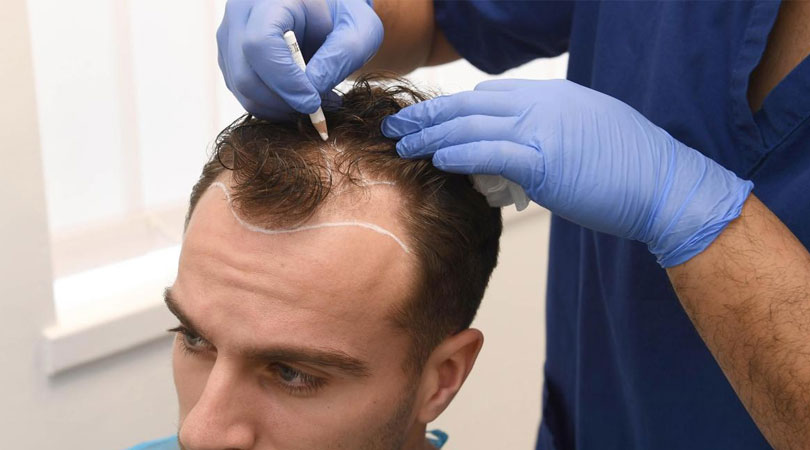
For whom is Stem Cell Hair Transplantation Suitable? Stem cell hair treatment can be applied to eve..
Read more
To Whom is Beard Transplant Performed? In cases where there is no beard in the face area or the den..
Read more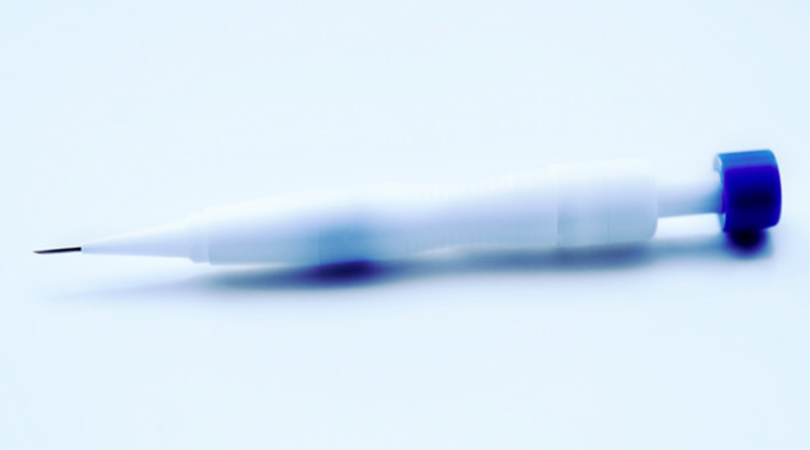
How is DHI Hair Transplant Performed? Before DHI Hair Transplant, computer aided hair analysis is p..
Read more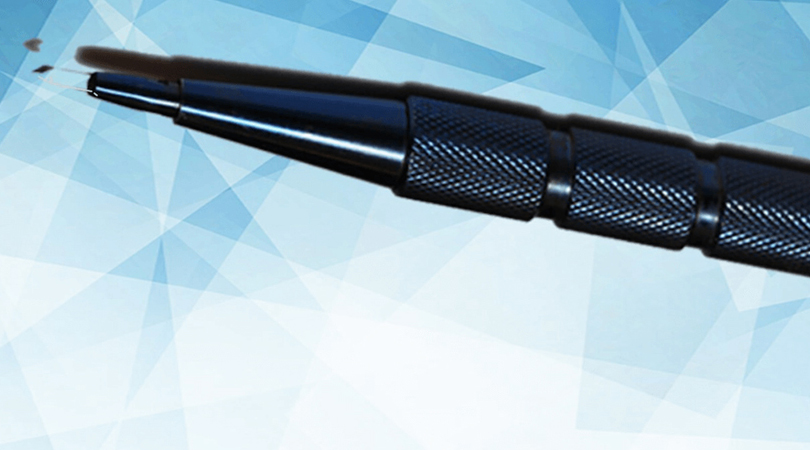
What is Sapphire FUE Hair Transplantation? Sapphire fue hair transplantation is performed with spec..
Read more
How is Hair Transplantation Performed? Hair transplantation is specially designed and applied for t..
Read more
 EN
EN TR
TR FR
FR ES
ES DE
DE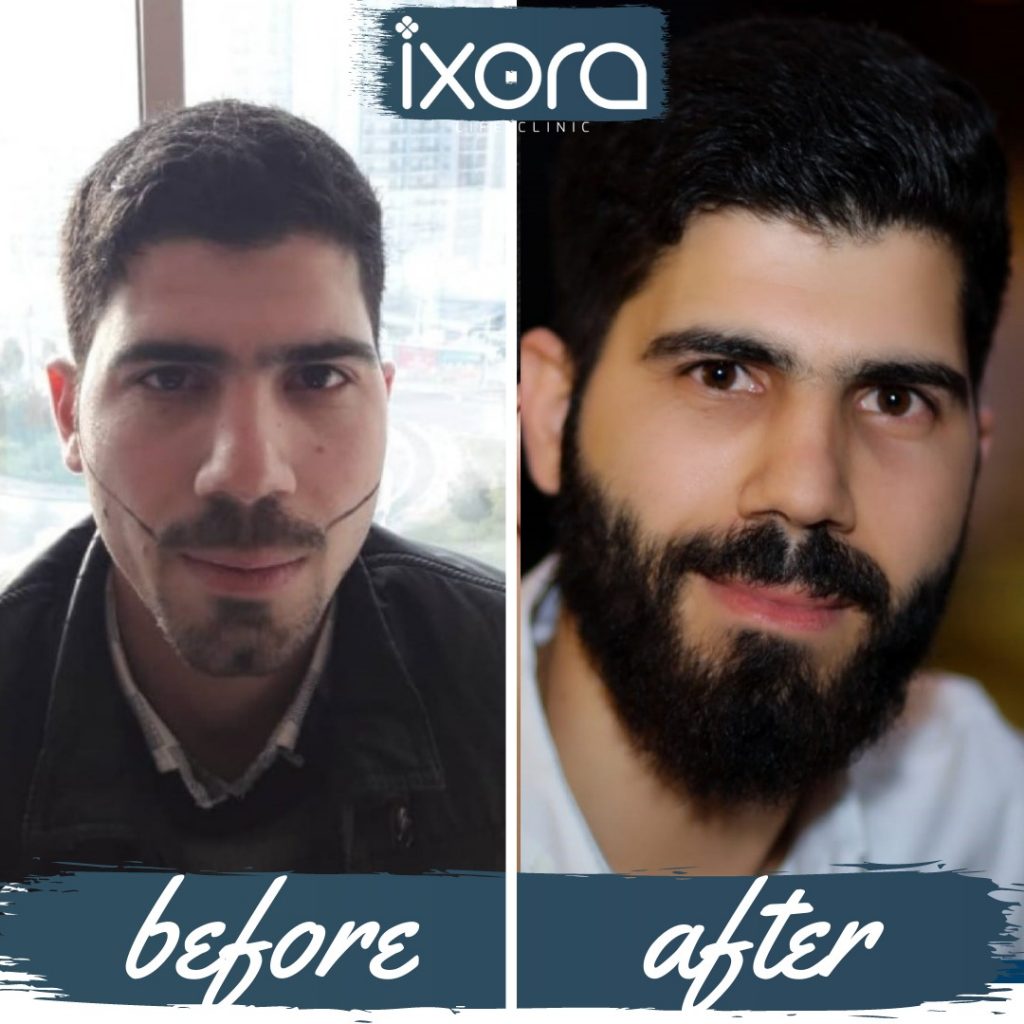
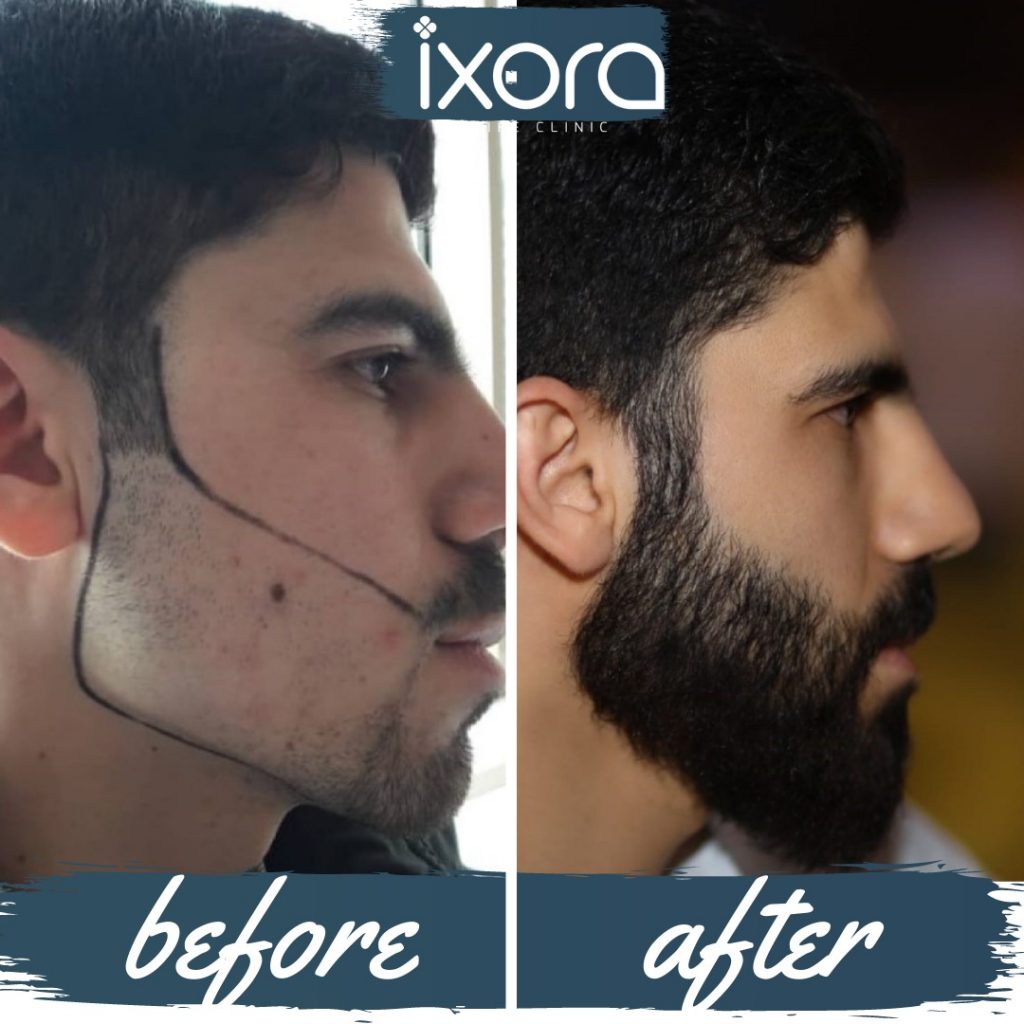
Ixora life clinic is amazing! The staff here is always so professional and kind. They take time to explain every part of the process and I greatly app..
I was warmly welcomed to the clinic for my dental implant, all my worries vanished and at no time did I experience any discomfort. My procedure went s..
I have been extremely pleased with ixora life doctors and the treatment I have received. From start to finish I felt very pleased with the professiona..
Firstly they did my free hair analysis . Then surgery went without any pain. I am grateful to My Dr and his crew. I cant tell how curious ı am to see ..
Doctors in ixora’s calmness and experience with dealing with nervous patients is fantastic. When I went home I had no problems with the implants, and ..
Excellent very happy with my teeth implant and would recomend to anyone considering having them done. This is definetly the best place to have them do..
Ixora Life Clinic staff was very professional, from the first contact, through my trip to Istanbul, accomodation, the procedure itself, till the after..
My tooth broke and I needed a new implant. I got an appointment very quickly and the process for getting the new implant started. Ixora was very knowl..
All I wanted was to have my two teeth on the front back and they look fabulous. Once I had decided to have two gaps filled by implants, I immediealty ..
If you consider hair transplant procedure, my advice would be to choose Ixora Life. They are definetly the best in this procedure and the results are ..
I had my procedure done in the office and am very glad I did it with them. When I look at myself in the mirror I feel happier than I have in years. I ..
I have my hair transplant operation. A truly professional team. They provide information flow before and after hair transplantation. I am very happy w..
This clinic is wonderful, they really care about getting the results you want with your hair transplant procedure and works with you to achieve them. ..
We always come here for our family regular dental care, we are satisfied with our doctors...
I love the results and think Ixora Clinic and their staff are wonderful. I had no issues and everything went really very well. My friends recommended ..
Before I had a hair transplant, I did a lot of research and found Ixora Clinic by chance. I am so happy with the result...
I had my implant done here a year ago, it still looks solid and I am very happy with the result...
We came to my daughters implant, it was a long process, and we got through it very well. I recommend this clinic to everyone...
Employees here completely understood the look that I wanted for my hair and they performed it exactly. I didn’t went through any complications through..
I am very pleased with my results, teeths lookin very natural and I definitely recommend ixora and the team if you are considering having good teeths..